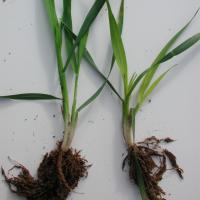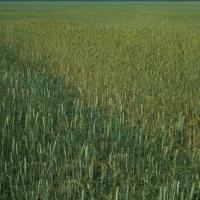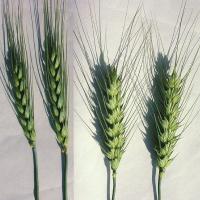It is not possible to rely on visual symptoms of nutrient deficiency as single element symptoms can often be confused with each other or with disease or other stresses. Also, once the deficiency has manifested itself by way of a symptom, the yield penalty may have already occurred.
In many cases plants will not show obvious signs of a deficiency even though crop growth may be restricted. Up to 50 per cent reduction in growth can occur before symptoms become obvious. This reinforces the need to undertake plant tissue testing as a regular means of monitoring crop growth and performance. The most important elements that can be monitored using plant tissue analysis include copper, zinc, manganese, sulphur and phosphorus.
Collecting plant tissue samples
All plant tissue testing kits have instructions provided which give full details on sampling and collection techniques for a range of crops being monitored. When collecting samples, the following procedures should be followed:
- Collect samples early in the week, so the lab analysing your samples can receive and process your samples within the week. Samples should also be collected and posted away the same day if possible.
- Allow 14 days after a herbicide application before sampling. Avoid sampling if the crop is stressed
- Sample at the specified growth stages. Identify and record the crop growth stage and date that the sample was collected.
- Sample appropriate plant parts for the main nutrients in question
- The start of tillering (approximately 4 weeks from sowing) to early jointing (approximately 12 weeks from sowing) is the preferred sampling stages for cereals. Samples should be taken when the deficiency is most likely.
Interpreting plant tissue analysis result
Plant weight, plant age and ratio with other nutrients are factors which need to be taken into account when interpreting laboratory results.
Recommended minimum plant nutrient levels for cereal crops at varying plant stages
| Plant nutrient (%) | Deficient | Marginal | Adequate | Excess/toxic |
|---|---|---|---|---|
| Phosphorus (Z30) | <0.3 | 0.3-0.37 | >0.37 | 0.7 |
| Phosphorus (Z30 - 32) | <0.27 | 0.27-0.3 | >0.3 | 0.7 |
| Nitrogen (Z26) | <4.5 | 4.5-5.5 | >5.5 | 6.5 |
| Nitrogen (Z30) | <4.0 | 4.0-4.5 | >4.5 | 6.5 |
| Potassium (Z21 - 30) | <1.5 | 1.5-2.3 | >4.5 | 6.0 |
| Sulphur (Z21 - 30) | <0.2 | 0.2-0.23 | >0.23 | - |
| Magnesium (Z21-30) | <0.10 | 0.1-0.12 | >0.12 | - |
| Calcium (Z21 - 31) | <0.15 | 0.15-0.2 | >0.2 | - |
| Micronutrients (ppm) | Deficient | Marginal | Adequate | Excess/toxic |
|---|---|---|---|---|
| Molybdenum (Z21 - 30) | <0.05 | 0.05-0.1 | >0.1 | - |
| Manganese (Z21 - 30) | <15.0 | 15-20 | >20 | 700 |
| Iron | <70.0 | 70-100 | >100 | - |
| Copper (Z21 - 30) | <1.5 | 1.5-3 | >3.0 | - |
| Zinc (Z21 - 30) | <16.0 | 16-25 | >25.0 | - |
| Boron (Z21 - 30) | 3.0 | 3.0 | >3.0 | 30-100 |
Recommended minimum plant nutrient levels for a range of pulse crops and canola
These are given for a range of pulse crops and canola during vegetative stages (seedling to budding).
| Plant nutrient (%) | Faba beans | Lupins | Field peas | Canola |
|---|---|---|---|---|
| Phosphorus | 0.35-0.45 | 0.2-0.3 | 0.25-0.4 | 0.25-0.3 |
| Nitrogen | 4.0 | 4 | - | 2.7-3.2 |
| Potassium | 2.0-2.5 | 1.2-1.5 | 1.5-2.0 | 1.3-2.8 |
| Sulphur | - | 0.2-0.25 | - | 0.25-0.33 |
| Magnesium | 0.2 | - | 0.2 | 0.14-0.12 |
| Calcium | 0.6 | - | 0.6 | 1.0-1.4 |
| Micronutrient (or trace elements) | Faba beans | Lupins | Field peas | Canola |
|---|---|---|---|---|
| Manganese (Mn) (mg/kg) | 20-25 | 17-20 | 20-30 | 15-20 |
| Iron (Fe) (ppm) | - | - | - | - |
| Copper (Cu) (mg/kg) | >3.0 | >1.2 | >3.0 | Whole shoots of young plants (seedling) below about 4mg/kg to 2.2mg/kg (rosette) and YEB levels below about 3mg/kg indicate copper deficiency |
| Zinc (ppm) | >20-25 | >12-14 | 20-30 | Whole shoots of young plants (40 days) below about 23mg/kg and YEB levels below about 15mg/kg indicate zinc deficiency |
| Boron (mg/kg) (ppm) | 10 | 15 | 10 | 15-22 |
Footnote: young leaves are recommended for micronutrient testing if suspected.





